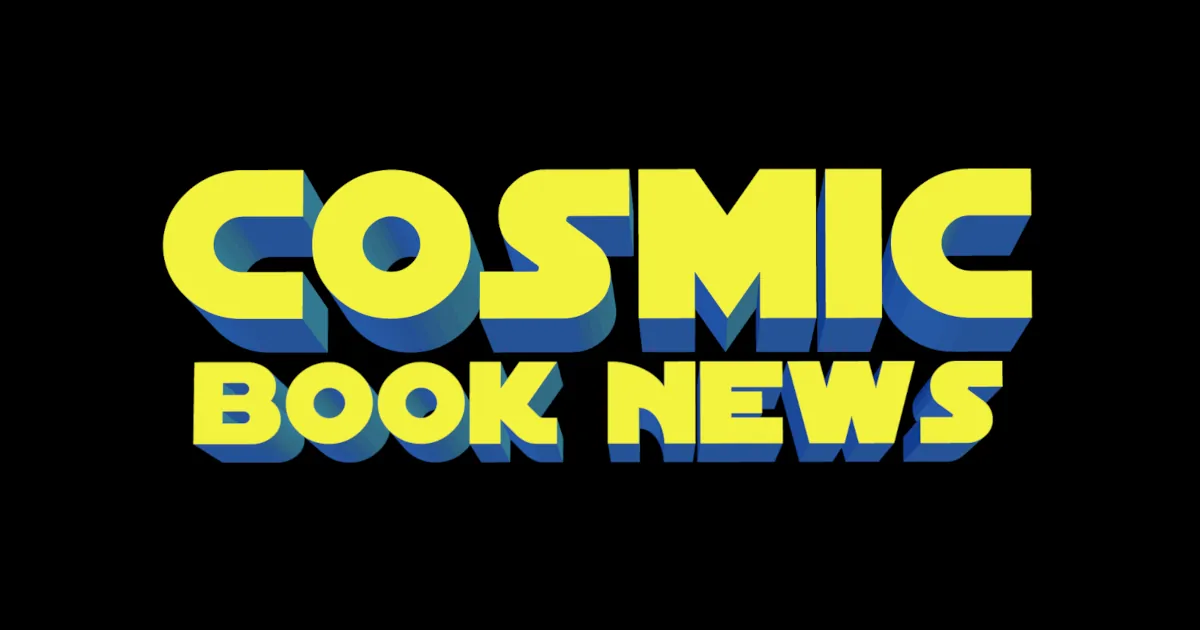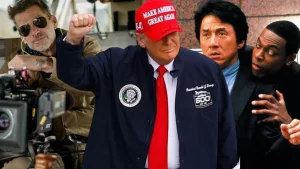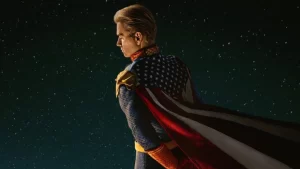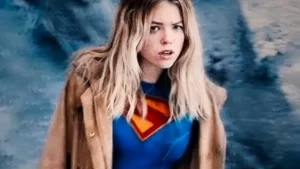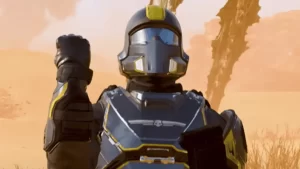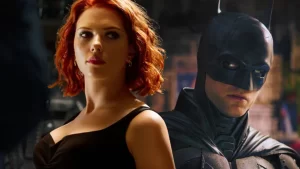More Lord of the Rings?
A Film Review of The Hobbit: An Unexpected Journey
By: Lawrence Napoli
[*Note, the reviewer did see this film opening weekend but met up with health complications which is why this review is coming out now.]
Peter Jackson is to be credited for making The Lord of the Rings trilogy an instant classic featuring incredible cinematography, costume design, set design, visual effects and performance which garnered unparalleled success from “The Academy” for the fantasy genre by winning best picture of the year for Return of the King. That kind of legendary success makes any follow-up film or franchise a tad anticlimactic; that is, unless one decides to go back to the same well of success. The danger inherent of revisiting iconic greatness of the past is that the new story will always be compared to the original which is completely unfair and totally natural. Would the Star Wars prequels not have been be considered as inferior to episodes 4-6 had they been released chronologically? The prized fiction of the Tolkien estate will now go through the exact same scrutiny with a second trek through Middle Earth with another trilogy which happens to be a prequel tale.
Once more into the breach.
Let me be perfectly clear. This first installment of The Hobbit looks, sounds and feels a little too much like Fellowship of the Ring. A group of adventurers assemble to go on a quest, a ton of walking is featured, there are plenty of fights with monsters, there is a riveting escape through a subterranean stronghold and Gandalf is back with a bearded vengeance. These are the facts of this film’s plot and they are undisputed. Now, I didn’t just spoon feed the entire movie, but these elements combine for the vast majority of the screen time and none of it seems fresh. The leader of the Dwarven expedition has the same personality and looks (minus height) of Aragorn. The countryside of New Zealand is as vast and beautiful as the landscapes from every other LotR film. Although trolls and goblins are featured more as antagonists, they serve the same function as orcs: brutal antagonists that are grotesque looking. The goblin lair looks eerily similar to and was shot with the same bird’s eye view and dynamic angles as the Mines of Moria sequence. Gandalf still shows off his intimidating “scolding spell” where his shadow expands and his voice gets super deep and loud so as to get his point across with zero talk-back. Been there; done that.
[[wysiwyg_imageupload:5540:]]
These nasties are fatter than I’m used to.
Screenwriters Fran Walsh, Philippa Boyens, Peter Jackson and Guillermo del Toro wrote these elements into the screenplay because they are easy connections for the audience to make with the LotR trilogy which generates familiarity with The Hobbit. I’m not entirely sure how critical these overt connections are to the story when the setting, environments and ambiance of Middle Earth such as the Shire and Rivendale are themselves so rich and unmistakably LotR that it would have been nice to spend more time exploring Bilbo Baggins, the person, prior to this adventure. As it is, the audience is given a peripheral glance at the main character’s lineage via Gandalf and the audience is to simply accept that this Hobbit in particular should be more prominent than pursuing a simple existence of peace and serenity. Bilbo’s motive for eventually risking life and limb for the ragtag group of dwarves is understandable, but not entirely personal. Unlike Frodo, who carries the burden of the one ring specifically to save the Shire (and Middle Earth by extension); Bilbo is shamed into not being bored anymore. What we have here is a plot that suffers from stakes that aren’t as high as an army of darkness threatening to conquer all of Middle Earth. It’s almost like the difference between a space station that blows up planets versus a trade federation blockade. If the story cannot be written to be more grandiose than it is, an opportunity to make it more personal is ripe for the picking and this simply didn’t happen in The Hobbit. Yes, yes, we have to get right into the sword fights ASAP, but the action alone didn’t make LotR great. Why should it be any different for The Hobbit?
[[wysiwyg_imageupload:5541:]]
Do they expect me to use this bloody thing?
For all the similarities The Hobbit has with the LotR trilogy, one extremely good thing they share in common is the overall production value that never ceases to amaze with every frame. The lighting is beautiful, the set pieces are tremendous, the costumes are superb, the weapons look gorgeous, the landscapes are breathtaking and the CG work is clean and seamless. I give two thumbs way, way up for production designer Dan Hennah, art director Simon Bright and cinematographer Andrew Lesnie. I didn’t even mind the 3D element of the visual presentation although this effect never comes close to being described as “a vital element to the viewing experience.” Unfortunately, I seem to have watched The Hobbit at the standard 3D frame rate so I cannot comment on the utter horror that some are expressing over the 48 FPS controversy. I simply consider myself fortunate for not experiencing something else that may have sullied the film for me because visual style was one of the best aspects of this movie.
[[wysiwyg_imageupload:5546:]]
The culinary talents of trolls.
Performances are once again a high point for this fantasy story and it all begins with Ian McKellen as Gandalf. Although this is meant to be Bilbo’s story, there is no question that Gandalf is the engine and McKellen delivers a carbon copied, heart-warming performance that harkens back to the original trilogy as if it were created yesterday. He is every bit the grandfatherly sage who oozes charisma and respect which is vital for this kind of story because Gandalf’s character is responsible for a healthy amount of exposition which needs to be relayed to the audience without boredom setting in. Perhaps the most enjoyable part of McKellen’s performance is his variety of vocal intonation from calm and soothing, to worried and troubled, to enraged and aggressive.
[[wysiwyg_imageupload:5548:]]
I’m cuter than Aragorn because I come in bite size.
Bilbo Baggins is initially reprised by actor Ian Holm who played an elderly Bilbo in the original trilogy, but as The Hobbit is a tale of Bilbo’s youth, Martin Freeman assumes the mantle of the protagonist for this tale. Bilbo is perhaps one of the most unassuming, everyman characters in all of fiction, thus the need to communicate genuine shock and awe at this amazing new world that gets opened up to him thanks to Gandalf, is essential. Freeman is an excellent choice for this part as his mannerisms (particularly in his face) sell Bilbo far better than any line of dialogue. Freeman is clearly going for common pragmatism in his approach to this hobbit (as opposed to misty-eyed altruism in Elijah Wood’s Frodo) which produces excellent reactions on his part in scenes where his character acts uncharacteristically brave and Bilbo is stunned at what he just did.
[[wysiwyg_imageupload:5545:]]
Why does everyone take advantage of me?
The supporting cast, however, is somewhat of a disappointment to me. No, this criticism does not apply in one instance to Andy Serkis whose continued performance as Gollum is masterful, creepy, amusing and sly. It does directly apply to the primary antagonist or rather the lack of a singular identifiable threat. Certainly, Gollum is the one ring’s initial bearer and an obstruction in Bilbo’s path, but he isn’t particularly nefarious due to the sympathetic manner he is presented on the screen. The orc lord that hunts the dwarven expedition is about as cookie-cutter as monsters get and reminds me of the utter irrelevance of every orc that came before in the original trilogy. The exact same thing can be said of the Goblin King. Although this film does contain an appearance from Saruman, he isn’t quite the evil b-stard he becomes.
[[wysiwyg_imageupload:5542:]]
Is precious the MVP of this film?
I simply did not care for any of the dwarven companions. It has less to do with their independent performances and more with the fact there are so many of them with so few lines and equally rare opportunities to be relevant on screen. The original “fellowship” had far fewer members with a more diverse racial composition which is indispensable for the audience’s ability to identify and compartmentalize each character’s contributions. The one shining spot was the group’s brief performance of “Far Over the Misty Mountains Cold” in Bilbo’s house which was eerily warm and a nice addendum to the CG, fantasy and violence.
[[wysiwyg_imageupload:5547:]]
The mountains are lovely, dark and deep.
The Hobbit is a very good film, but mark my words. Not one of these Hobbit films will equal the greatness of any individual chapter of The Lord of the Rings trilogy. Taking one book and spreading out the plot thin enough to accommodate three films may be an adaptation strategy that pays off in the future, but not for this prequel trilogy and especially not if Peter Jackson is hell bent on presenting it in the same form as the originals. I realize that the story is building up to an epic confrontation with Smaug the dragon, but as spectacular as I’m sure that sequence will be, the audience needs something else to peak our interests in the meanwhile. So many film franchises these days are featuring large casts with marquee actors filling out the roster and the method of balancing story with character seems to be the real trick to making good films versus great films. Only time will tell if the story of The Hobbit will step up its game with The Desolation of Smaug set for release this coming December.

